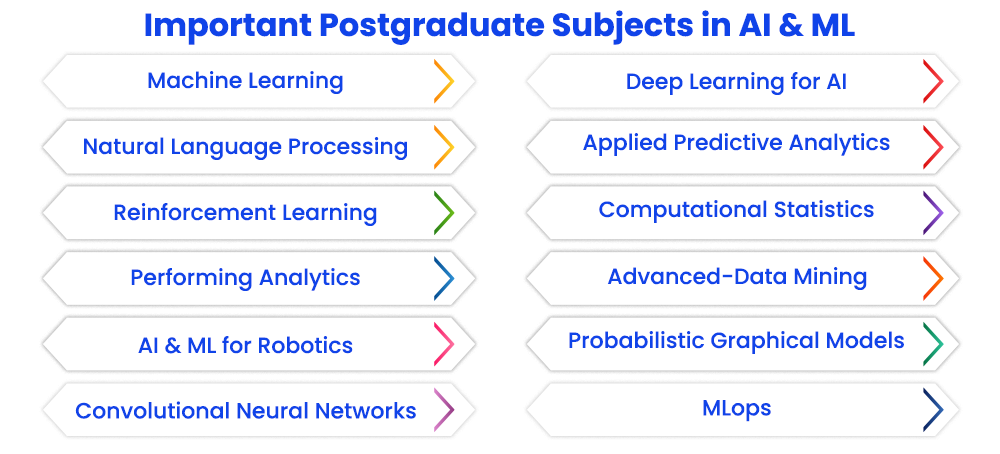Advanced Artificial Intelligence Syllabus 2025: Master Deep Learning, NLP & Reinforcement Learning

Advanced Artificial Intelligence Syllabus: What You Need to Know in 2025
Artificial Intelligence is no longer a futuristic buzzword—it’s shaping our lives, industries, and innovations every single day. As AI continues to evolve rapidly, universities and training programs are updating their Advanced Artificial Intelligence syllabus to prepare students and professionals for real-world applications. Whether you’re an aspiring AI engineer, a researcher, or a curious learner, understanding the structure of an advanced AI course is essential to map your learning path.
In this guide, we’ll explore a modern, comprehensive Advanced Artificial Intelligence syllabus, the skills it covers, recommended resources, and how it prepares you for cutting-edge careers in machine learning, deep learning, and beyond.
📘 Introduction to Advanced Artificial Intelligence
An advanced AI course builds on foundational concepts to explore cutting-edge developments in machine learning, probabilistic models, and cognitive systems. These programs emphasize problem-solving in uncertain environments, multi-agent systems, and applications that require reasoning, learning, and adaptation. With AI technologies now embedded in everything from healthcare to autonomous vehicles, having a strong command of advanced topics has become a necessity for those pursuing technical roles in the AI field.
📚 Core Modules in the Advanced AI Curriculum
Here’s a breakdown of the standard modules in a top-tier Advanced Artificial Intelligence syllabus:
1. Uninformed and Informed Search Techniques
This module focuses on methods to traverse and explore problem spaces when the optimal solution isn’t known in advance. Uninformed methods like Breadth-First Search (BFS) and Depth-First Search (DFS) provide systematic ways to find solutions, while informed approaches like A* and Greedy Best-First Search use heuristics to guide the search more efficiently. These algorithms are vital in AI planning, robotics, and pathfinding.
2. Constraint Satisfaction Problems (CSP)
Constraint Satisfaction Problems form the backbone of decision-making systems where multiple conditions must be satisfied simultaneously. Techniques such as backtracking, forward checking, and arc consistency are taught to help students model and solve real-world problems like exam scheduling, Sudoku solvers, and resource allocation. CSPs offer a logical and mathematical approach to AI problem modeling.

3. Game Playing and Adversarial Search
Game theory and adversarial search are central to building intelligent agents capable of competing or collaborating in structured environments. The Minimax algorithm and Alpha-Beta pruning allow AI to simulate and optimize moves in deterministic, zero-sum games like chess. Students also explore stochastic games and Monte Carlo Tree Search (MCTS) to model uncertainty and non-deterministic outcomes—crucial for games like Go and real-time strategy.
4. Probabilistic Reasoning and Uncertainty
AI systems often operate in unpredictable environments, and this module teaches how to make informed decisions despite incomplete information. Students learn to build and manipulate Bayesian Networks, Hidden Markov Models (HMMs), and Dynamic Bayesian Networks for temporal reasoning. Inference algorithms help machines evaluate probabilities across complex networks, leading to robust decision-making.
5. Markov Decision Processes (MDPs)
MDPs model decision-making where outcomes are partly random and partly under the control of the agent. This section explores how to define states, actions, transition probabilities, and rewards. Students learn to compute optimal policies using value and policy iteration. These concepts are foundational for reinforcement learning and applications like robotics and automated control systems.

6. Machine Learning Fundamentals
This module offers a deep dive into supervised and unsupervised learning. It begins with core algorithms like linear regression, logistic regression, and k-means clustering, then moves into performance metrics such as accuracy, recall, and F1-score. Students learn how to train, validate, and evaluate models using real datasets. Concepts like dimensionality reduction (PCA, t-SNE) are also introduced to handle high-dimensional data effectively.
7. Deep Learning and Neural Networks
Deep Learning is the most industry-relevant part of the syllabus. Students explore various neural network architectures, including CNNs for image processing, RNNs for sequence data, and transformers for NLP tasks. The module also includes training techniques, loss functions, regularization, and advanced optimizers. Pretrained models such as BERT, GPT, and ResNet are explored, equipping students to build scalable, production-ready systems.
🧠 Advanced Topics and Electives
Beyond the core, students can choose specialized paths based on their interests:
- Natural Language Processing (NLP)
This section focuses on understanding and generating human language using AI. Students work with tokenization, word embeddings (Word2Vec, GloVe), sequence models, and transformer-based architectures like BERT and GPT. Real-world projects include chatbots, text classification, and machine translation—skills that are invaluable in business automation and customer support.
- Computer Vision
Computer Vision teaches machines to interpret visual data. Students learn to implement image classification, object detection (YOLO, SSD), and segmentation using deep learning frameworks. With real-world use cases in surveillance, healthcare, and self-driving vehicles, this module is both exciting and impactful.

- Reinforcement Learning (RL)
RL is about learning by doing. Students explore Q-learning, Deep Q-Networks (DQN), and actor-critic methods. The goal is to build agents that learn from trial and error in simulated environments like OpenAI Gym. Applications include autonomous drones, recommendation systems, and game-playing bots.
- Explainable AI (XAI) and Ethics
As AI systems are increasingly used in critical decisions, understanding and explaining their behavior is crucial. This section teaches model explainability using tools like SHAP and LIME, while also covering the ethical implications of AI—such as bias, fairness, accountability, and transparency. Students learn how to develop responsible and socially-aware AI solutions.
🛠️ Tools & Technologies Used in AI Courses
Hands-on experience is central to any good AI curriculum. Students work with:
- Python: the primary language for AI development
- Jupyter Notebooks: for interactive experimentation
- TensorFlow and PyTorch: for building ML and DL models
- Scikit-learn: for traditional ML workflows
- Hugging Face Transformers: for NLP pipelines
- OpenAI Gym: for reinforcement learning environments
They also use tools like Git for version control, and cloud environments such as Google Colab or AWS for scalable computing.
📝 Assignments, Projects, and Evaluation
Courses typically include both theoretical and applied components. Assignments involve coding tasks, short answer questions, and mini-projects. Midterms and final exams test the theoretical foundation. Most importantly, capstone projects give students a chance to explore end-to-end AI solutions—like building a smart assistant, a medical diagnosis tool, or a fraud detection system.
Grading typically follows this breakdown:
- 30% Projects
- 30% Final Exam
- 20% Midterms
- 10% Quizzes
- 10% Participation
📖 Recommended Resources
To supplement learning, these resources are highly recommended:
- Artificial Intelligence: A Modern Approach – by Russell & Norvig
- Deep Learning – by Ian Goodfellow
- Hands-On Machine Learning with Scikit-Learn, Keras, and TensorFlow – by Aurélien Géron
- MIT OpenCourseWare on AI and ML
- YouTube: Two Minute Papers, StatQuest, CodeEmporium
These resources are accessible and align well with most syllabi.
Read Also Elon Musk Memes Just Got Political
🧩 Skills You’ll Master
By the end of this journey, learners will have:
- A deep understanding of modern AI algorithms
- Practical experience in implementing and tuning models
- The ability to process and analyze complex datasets
- Knowledge of ethical AI principles and responsible development
- Portfolio projects that demonstrate real-world readiness
🎯 Career Opportunities After Learning Advanced AI
Mastering the Advanced Artificial Intelligence syllabus can open doors to high-paying, high-impact roles like:
- AI/ML Engineer
- Data Scientist
- NLP Engineer
- AI Researcher
- Computer Vision Engineer
- AI Consultant
These professionals are in demand across industries like finance, e-commerce, education, transportation, and health tech.
🔄 Final Thoughts
An Advanced Artificial Intelligence syllabus is your gateway to mastering tomorrow’s most transformative technology. With the right mix of theory, practice, and curiosity, you can not only keep up with AI’s rapid pace—but shape its future. This guide offers a roadmap; now it’s your turn to take the first step.
💡 Pro Tip: Stay updated. The AI field moves fast. Bookmark official course pages, follow AI thought leaders on X (Twitter), and contribute to GitHub projects to keep your skills fresh.
